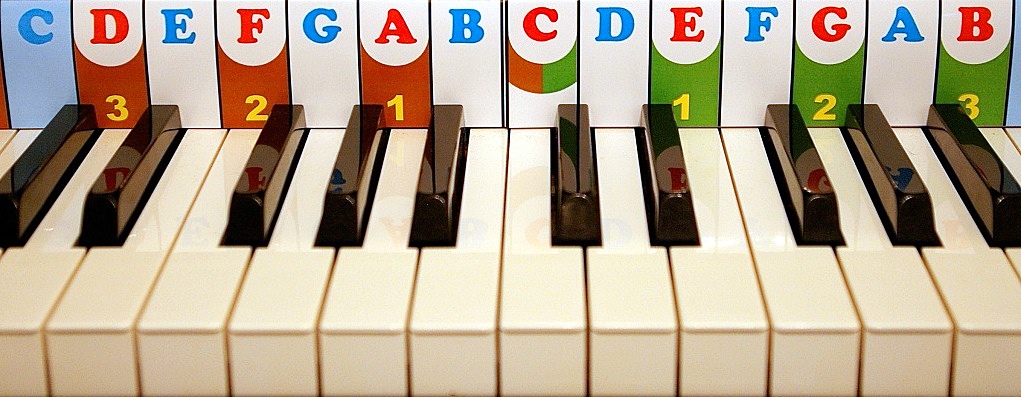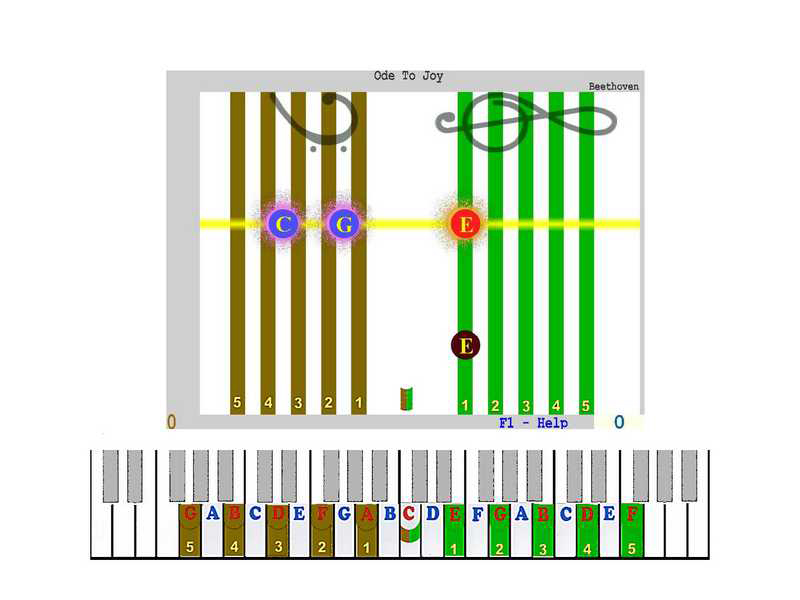- John, what are you looking for under the street lamp?
- I lost my car keys in the forest.
- So why don’t you look for the keys in the forest?
- There’s more light here, so I can see better!
An old joke that relates to learning music, primarily the piano.
From the very first lessons, most piano teachers all over the world begin their
lessons with the task of distinguishing between 2 and 3 black keys.
But why? You can just put the key-guides like these tabs on your piano - and
the issue is resolved!
Of course, the goal of piano lessons is to play and read music texts, isn’t it?
Can you or can’t you use a road navigator? Today the answer is obvious:
everyone has a navigator. Imagine now: you are invited to a new place, and
your host does not give you an address to place into your navigator. Instead he
says: oh, no-no-no! You have to learn the order of streets in this area. Let me
teach you that for $50 per hour.
That's what most piano teachers do. Why? For them, it is more
convenient. Yes, and more profitable (they think so). Although the reason for
the low income of most piano teachers is precisely this: they are comfortable
under the street lamp.
But why in the world does a beginner need the information about 2 and 3
black keys? Because his teacher was taught this way, so that’s what he or she
believes. There is no other reason! Will knowledge about keys bring a student
anywhere? I don’t think so.
Place my piano key guides behind these keys – the problem is solved. End of
story.
To begin with, what does each student want? He wants to start playing music
as soon as possible. The individual student is the key word. No, he does not
want to wait for the teacher to give him a hand. No, he does not like blindly
memorizing the teacher’s hand positions; he also is not keen to memorize his
music bar by bar. No, he does not want to play "Mary Had a Little Lamb." He
wants to play what he personally wants to play. And he wants to deal one-on-
one with music notation -- and play everything he wants without a
teacher. This is the harsh truth of life.
But instead of notes, we give him a puzzle: where are the 2 and where are the 3
keys? Hmmm. We drag our student over to play on our field. We also force him
to play by our own rules. After all, we hear well! Why does our student want to
see as well as hear? No! We won’t let it happen!
And here is the problem! In music literacy, the main thing is the notes. They
are carriers of information. Traditionally, it has been the musical notes that
must be learned first whether you like it or not!
Here in this picture, the keys are made barely visible, but the connection
between the notes and the keys is underlined by the graphics. This is how
children begin to understand what and when they need to play. Focusing on
keys is just a way for the teacher to teach you to play by imitating the teacher’s
hands, under the teacher’s total control. Focusing on keys is empowering for a
teacher. Focusing on music notation is empowering for a student. Do you see
the difference?
Starting to learn music by differentiating the black keys is literally an ancient
method in the worst, densest, most archaic sense. Music lessons like this were
wide spread at a time when there was neither Bach nor Mozart, not even Paul
McCartney. By the way, the aim for such lessons was to transfer the craft of
playing music. And the craft consisted of playing at funerals and
weddings. Music notation hadn’t yet come into existence. Students learned
everything aurally and from hands. This was and still is a blind way. The
“Traditional” way for a select few.
This training is for those who have a musical ear, for those who were born with
one. This training is for helping teachers find and select a prodigy for the craft
so they can play at weddings and funerals. What do average students get from
it?
The hole in a bagel!
That is, if a child or adult is not originally gifted, then he is forced to "crawl
under the lantern in search of keys" at his own expense.
And then we all wonder: why don’t people go to piano lessons? Or why, after
taking lessons for years, have they learned nothing? This is exactly why! They
can’t learn anything without a care giver, a teacher waiting over his shoulder!
If you were taught without being shown this picture, it was a mistake.
Now you know why you have problems with sight-reading music! Time to change!


